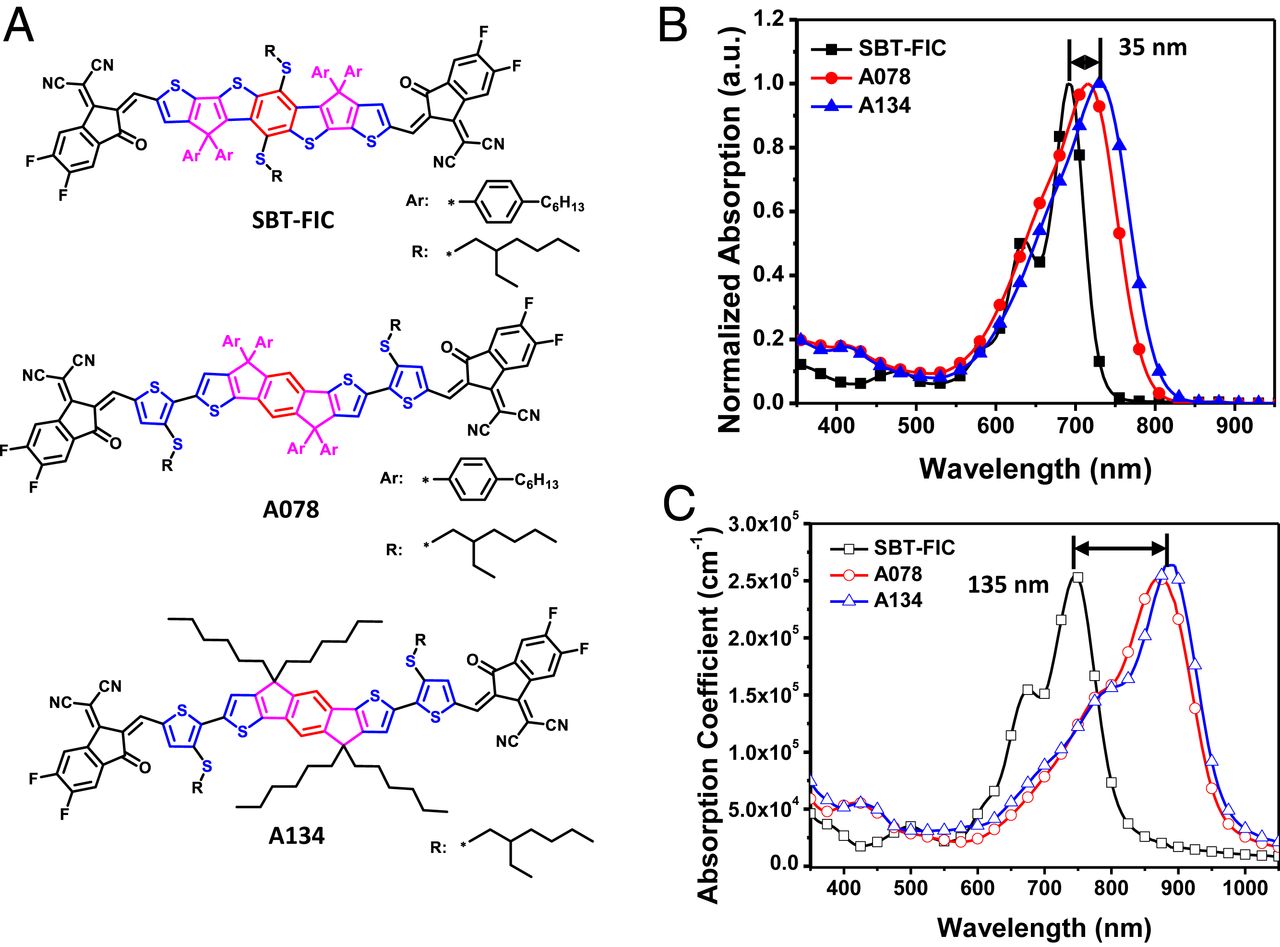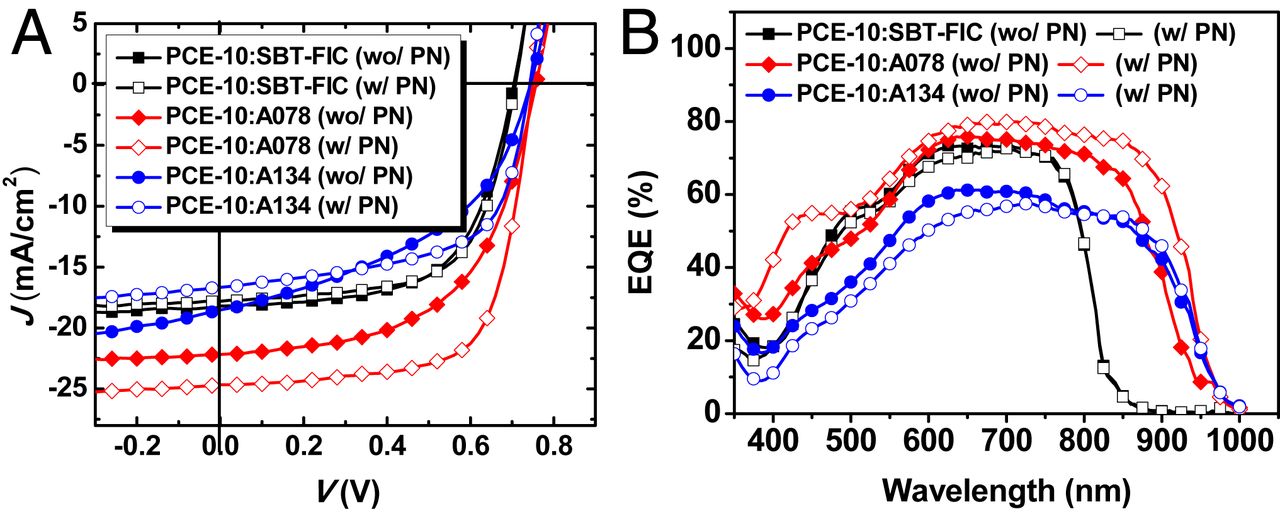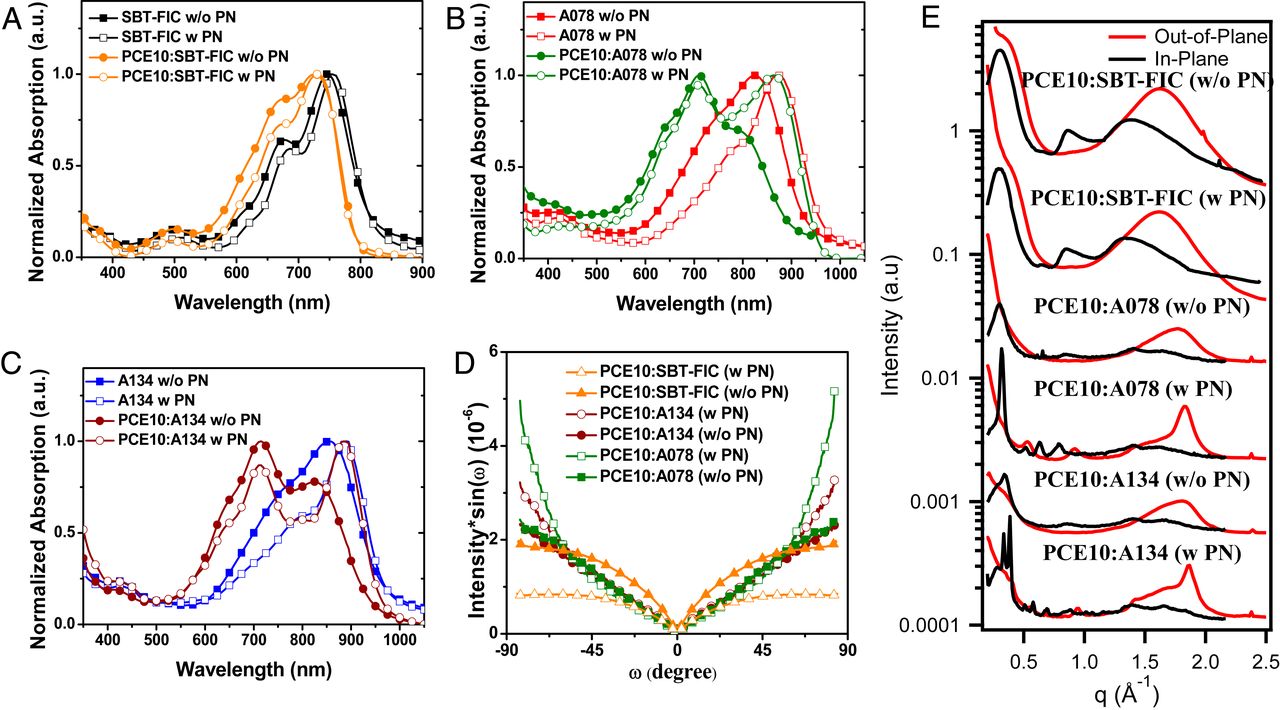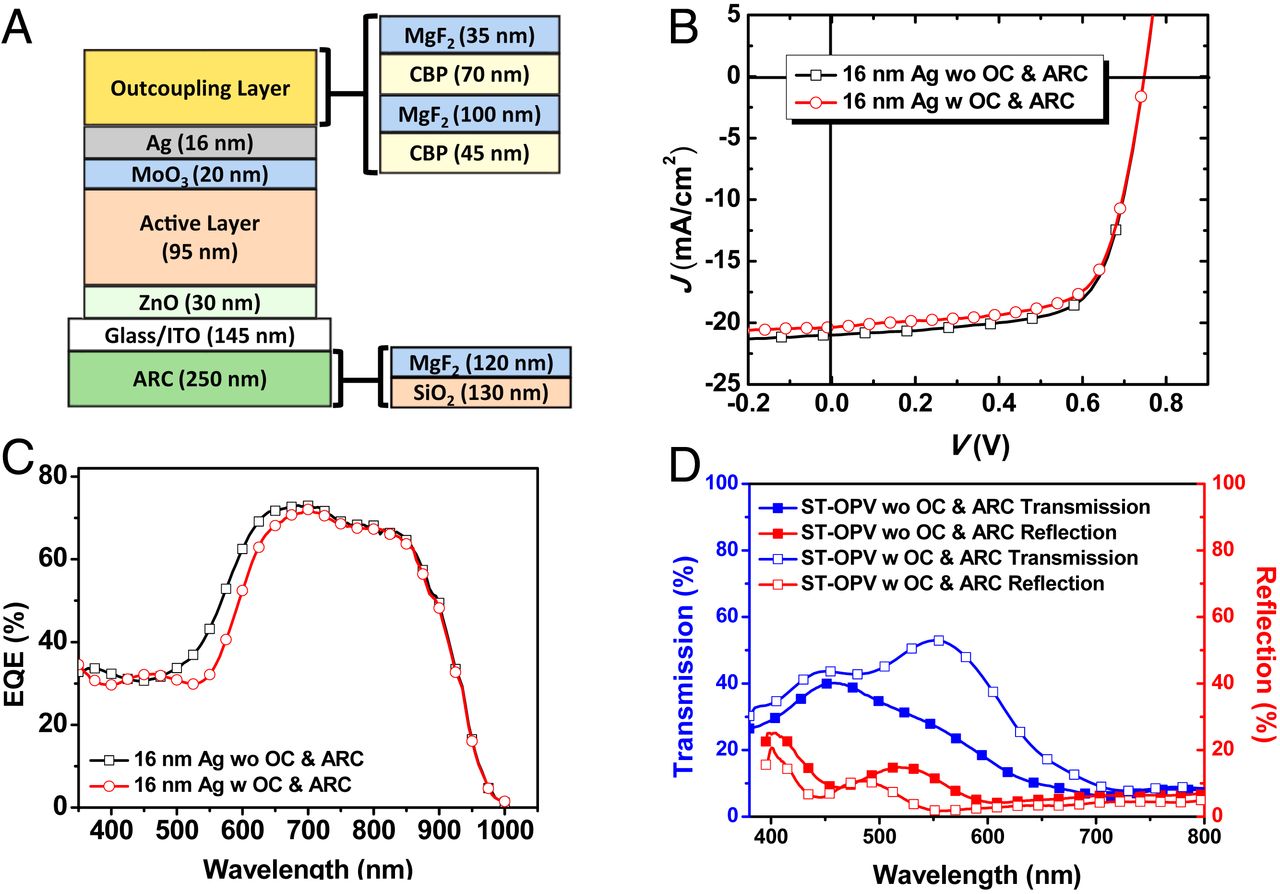
Recently, every now and then they talk about green energy, renewable sources thereof, as well as methods of obtaining, storing and using it. And this is quite logical, because the planet's population is constantly growing, and the reserves of fossil energy sources are rapidly depleting. Sooner or later a moment may come when all the energy used by people will be generated by the sun, wind, etc. Therefore, many researchers are engaged in improving existing and creating new methods for collecting green energy. Today we take a look at a study in which scientists from the University of Michigan developed transparent (more precisely translucent) solar panels. What was this technology created from, what is the principle of its operation, and can skyscrapers become efficient collectors of solar energy? We will find answers to these questions in the report of scientists.Go.
Research basis
Solar panels were once quite rare, but now, fortunately, their availability and popularity have greatly increased. Recently, I was passing by a residential building in my city and noticed that its blank walls and roof are completely covered with solar panels. This caused me to be equally surprised, admirable, and a sea of questions regarding efficiency, economic benefits, and more. Nevertheless, this empirical example perfectly shows one feature - the panels were installed where they would not interfere (i.e. not on windows).
Of course, there are entire fields of solar panels that cover hundreds of square meters (or even more), but in densely populated and therefore densely built cities, there is too little free space for this installation method. Someone will say: “if we really wanted green energy and solar panels, then there would be a place”. I agree, but the reality is still different. There may not be a lot of extra space between the skyscrapers, but there is a lot of windows, which themselves could become collectors of solar energy.
At the moment, there are already several developments in the field of translucent solar panels, the efficiency of which reaches 7%. Organic semiconductors play an important role in their development. Compared to inorganic semiconductors, narrow excitonic *stripes inside organic semiconductors open up new possibilities in the field of organic photovoltaic cells (hereinafter OPV for organic photovoltaics ), since many organic compounds selectively absorb light outside the visible wavelength range.
Exciton * - electronic excitation in a semiconductor, dielectric or metal, moving through the crystal, but not associated with the transfer of electric charge and mass.The efficiency of translucent photovoltaic cells (ST-OPV) of 7% can please scientists and people who understand the difficulty of achieving such an indicator with such a non-standard technology, but from the point of view of economic benefits, this is too little. In addition, only a small fraction of the developed ST-OPVs achieve a visible transparency of ∼50%, which is critical for many applications.
As a result, to create an ST-OPV it is necessary to find a balance between energy collection efficiency and a sufficient level of transparency, which is not an easy task. The scientists also add that many of the already created ST-OPVs have a very unaesthetic appearance (glass shade), which also does not contribute to the popularization of this technology.
To date, effective neutral color ST-OPVs are mainly focused on the use of materials with strong absorption in the near infrared region (NIR), including multijunction device structures to minimize thermalization loss, anti-reflective coatings (ARC) or aperiodic dielectric reflectors (ADR) to increase absorption.
In the work we are considering today, scientists describe their version of ST-OPV, which reaches PCE = 10.8 ± 0.6% and APT = 45.7 ± 2.1%, which leads to LUE = 5.0 ± 0.3.
PCE* — (power conversion efficiency);The device uses an NFA (non-bulerene acceptor) molecule with high absorption in the near infrared range, which requires only a few steps to synthesize. Despite the fact that NFAs have partially covalently condensed ring structures (rather than rigid and completely condensed ones), strong intermolecular π - π interactions and close molecular packing were observed in them ( 1A ).
APT* — (average photopic transmission);
LUE* — (light-utilization efficiency).

Image # 1
The combination of materials that absorb light in the near infrared range, output (output of photons from the LED after generation) structures (OC from outcoupling ) on the output surface and transparent electrodes made it possible to achieve the same compromise between efficiency, transparency and aesthetics.
The color-neutral ST-OPV using a transparent indium tin oxide anode (ITO from indium tin oxide ) showed PCE = 8.1 ± 0.3%, APT = 43.3 ± 1.5%, and LUE = 3.5 ± 0.1%. The indicators of light passing through the device were as follows: color rendering index (CRI) = 86; correlated color temperature (CCT) = 4143 K; chromatic coordinates - (0.38, 0.39).
Research results
Image 1A shows the molecular structures of the three NFAs tested, one of which (namely SBT-FIC) showed a fully fused molecular backbone. The other two NFAs (A078 and A134) with partially fused cores are SBT-FIC isomers containing four thiophenes, two cyclopentadienes, and one benzene ring.
One of the main differences between the three NFAs is the complexity of the synthesis. Making SBT-FIC requires 10 synthesis steps, while making A078 and A134 requires only 4 to 6 steps. In addition to this, A078 and A134 are attractive for their relatively high yield, as well as less toxic and cheaper materials for synthesis.
The absorption spectra of NFA in the UV-visible range are shown in 1B and 1C... Surprisingly, thin films A078 and A134 show significant bathochromic shifts * ~ 135 nm compared to SBT-FIC with an absorption peak at λmax = 900 nm.
Batochromic shift * - shift of the spectral band to the long-wave region under the influence of substituents or changes in the environment.Cyclic voltammetry of NFA molecules showed that for SBT-FIC the energies of the highest occupied molecular orbital * (HOMO) and the lowest vacant molecular orbital (LUMO) were EH = -5.81 (± 0.02) and EL = -4.15 (± 0.03) eV. For A078, the indices were 5.58 (± 0.02) and -4.06 (± 0.03) eV. And for A134: -5.54 (± 0.02) and -4.05 (± 0.03) eV.
* — , .A078 and A134 exhibit a lower HOMO-LUMO band gap (∼1.40 eV) than SBT-FIC (∼1.65 eV), which is consistent with optical measurements.
( ) — , .
( ) — .
Further, NFA mixed with PCE-10 was used in OPV with the ITO / ZnO (30 nm) / active layer (∼100 nm) / MoO 3 (20 nm) / Ag (100 nm) structure .

Image # 2
Graph 2A shows the current density and voltage characteristics of the above described NFA + PCE-10.
In an apparatus based on A078 were achieved following parameters: PCE = 13.0 ± 0.4%, VOC = 0.75 ± 0.01 B, JSC = 24.8 ± 0.7 mA / cm 2 and FF = 0.70 ± 0.04.
The OPV device based on A134 showed: PCE = 7.6 ± 0.2% with VOC = 0.75 ± 0.01 V, JSC = 16.7 ± 0.5 mA / cm 2 and FF = 0.61 ± 0.03.
For the PCE-10: SBT-FIC device, the indicators were as follows: PCE = 7.8 ± 0.3% with VOC = 0.70 ± 0.01 V, JSC = 17.2 ± 0.7 mA / cm 2 and FF = 0.65 ± 0.02.
It is worth noting that the addition of 1-phenylnatalene (PN) leads to a significant increase in the efficiency of the A078 and A134 devices compared to SBT-FIC, which is associated with the improved molecular packing of A078 and A134, as well as the more favorable orientation of molecules in the mixture. You can also see that the PCE-10: A134 device shows a lower PCE compared to the OPV PCE-10: A078. This is due to the crystallinity of A134, which leads to its lower solubility.
Graph 2B shows the external quantum efficiency * (EQE) spectra of various device variants.
Quantum efficiency * - the ratio of the number of photons, the absorption of which caused the formation of quasiparticles, to the total number of absorbed photons.The significant improvement of JSC for A078 over SBT-FIC OPV is due to its absorption redshift * of ~ 200 nm, which provides coverage of the solar spectrum further into NIR.
Redshift * - a phenomenon where the wavelength of radiation increases (light becomes redder, for example), and the frequency and energy decrease.EQE A078 OPV reaches 80%, between λ = 700 and 900 nm, leaving a transparency window between the visible wavelengths from 400 to 650 nm.

Image # 3
Graphs 3A - 3C show the profiles of various devices based on pure NFA films and PCE-10: NFA mixture with / without 1-phenylnatalene.
With the addition of 1-phenylnatalene, the absorption index of the PCE-10: NFA film is practically unchanged. But in the mixtures PCE-10: A078 and PCE-10: A134, a new pronounced peak of aggregation at about 900 nm was found. This indicates that the addition of 1-phenylnatalene enhances intermolecular π - π interactions at partially bound acceptors rather than at the polymer donor.
Further, the morphological properties of different variants of the device were studied.
A078 exhibits a broad (100) diffraction peak at 0.31 Å – 1 with a lamellar coherence length L c = 7.5 nm. In the case of A134, the diffraction peak was narrower and sharper at 0.36 Å – 1 with a higher value of L c = 15 nm. It follows from this that A134 has a higher ordering than A078, which is explained by the replacement of the bulky side chain of the p-hexylphenyl molecule with compact linear alkyl chains.
SBT-FIC, in turn, shows a diffraction peak at 0.34 Å – 1 with the shortest lamellar coherence length L c = 3.7 nm due to its amorphous nature.
Due to the addition of 1-phenylnatalene, the diffraction peaks (010) PCE-10: A078 and PCE-10: A134 ( 3E) at 1.79 and 1.82 Å - 1 (due to NFA) are displaced and show an increased coherence length (24 versus 52 Å for A078) and (30 versus 63 Å for A134).
But the addition of additives to PCE-10 does not affect the coherence value in any way. This confirms that morphological differences between device variants are from the NFA and not from the donor.
In addition, when 1-phenylnatalene was used, a dependence on the orientation of the molecules (parallel or perpendicular) was found. For PCE-10: A078, the parallel / perpendicular ratio increases from 2.37 to 3.64 ( 3D ). Since the parallel orientation of the molecules is ideal for charge transfer, it becomes obvious why the A078 device has such a high efficiency (compared to other options).
In view of these data, it was A078 that was used in the investigated semitransparent photovoltaic cells (ST-OPV), the structure of which looked as follows: ITO / ZnO (30 nm) / PCE-10: A078 (95 nm) / MoO 3 (20 nm) / Ag (16 nm).

Image # 4
The received ST-OPV showed LUE = 2.8 ± 0.1%, PCE = 11.0 ± 0.7% and APT = 25.0 ± 1.3%. However, despite a good PCE> 10%, this device cannot be used in architecture, since it requires that the average light transmittance of the APT be ~ 50%.
Scientists were able to solve this problem due to a specially designed structure for controlling the optical properties of the device, which allows achieving maximum transmission in the visible range and maximum reflection in the near infrared range.
An optical OC coating was applied to the silver anode, consisting of four layers: CBP (C 36 H 24 N 2 ; layer thickness 35 nm, refractive index 1.90) / MgF 2 (100 nm, 1.38) / CBP (70 nm) / MgF 2 (45 nm). And on the distal surface of the glass substrate coated ARC (antireflective material layer) consisting of a bilayer MgF 2 (120 nm) and SiO 2 (130 nm) with a sufficiently low refractive index 1.12.
ST-OPV with OC and ARC showed an increase in average light transmittance (APT) from 25.0 ± 1.3% to 45.7 ± 2.1%, which is an improvement of almost 80% compared to a device without additional layers (i.e. without OC and ARC) ... The power conversion efficiency (PCE) value remained practically unchanged ( 4C ). Only a slight decrease in the current density was observed (JSC = 20.4 ± 0.8 versus 20.9 ± 1.2 mA / cm 2 ). With this device configuration, the light utilization efficiency was LUE = 5.0 ± 0.3%. This figure, according to scientists, is the highest among the currently available ST-OPV devices.
The main indicators of the developed device are promising, it remains to study its appearance, which was done by means of simulated sunlight (AM1.5G).
The light transmitted through the device with OC and ARC coating had chromatic coordinates (0.33, 0.39) and CCT = 5585 K. Meanwhile, the high reflectivity of the ultrathin silver cathode at λ> 600 nm gives the device a green tint. Unlike Ag, ITO has a higher transparency with a flat transmission spectrum in the visible region. Using an ITO cathode and anode results in a more neutral shade.

Image # 5
The graphs and photo above show the spectral characteristics of current density, voltage and EQE of an ITO-based ST-OPV device with the following structure: MgF 2(120 nm) / ITO glass / ZnO (30 nm) / PCE-10: A078 (105 nm) / MoO 3 (20 nm) / ITO deposition (140 nm) / MgF 2 (145 nm) / MoO 3 (60 nm) ) / MgF 2 (190 nm) / MoO 3 (105 nm).
Compared to the Ag based ST-OPV, the ITO device shows differences in FF and VOC due to its higher work function * and surface resistance (~ 50 ohms / square).
The work function * is the energy that an electron must receive to remove it from the volume of a solid.But the most significant differences were observed in JSC and PCE scores. As the device becomes more and more transparent, the reflection from the ITO anode into the thin active region is reduced, eliminating the double pass of photons. To minimize the loss of low energy photons, the OC coating has been specially designed for maximum transmission in the visible spectrum and higher reflectivity at longer wavelengths. Thus, the OC coated device has 15% higher JSC and PCE values compared to the uncoated ITO device, although the apparent transparency is practically unchanged.
The OC coated ITO device exhibits LUE = 3.5 ± 0.1%, PCE = 8.1 ± 0.3% and APT = 43.3 ± 1.5%, and has an almost neutral shade. Also, the analysis of the device under test showed that it transmits the color of the object behind it ( 5D ).
For a more detailed acquaintance with the nuances of the study, I recommend that you look into the report of scientists and additional materials to it.
Epilogue
Cities are full of houses (sorry for the obvious), hence a lot of windows. Using them as a platform for collecting solar energy is a very sensible idea, but difficult to implement. On the one hand, it is necessary to collect the maximum energy, on the other, the essence of the window is that it is transparent.
In this work, scientists were able to demonstrate a working prototype of a semitransparent photovoltaic cell device with PCE = 10.8 ± 0.6%, APT = 45.7 ± 2.1% and LUE = 5.0 ± 0.3%. In other words, the efficiency of the device was 10.8% and its transparency was 45.8%. The main advantage of this development is the balance between these indicators.
At the moment, the efficiency of using light is about 5%, which is already good, because the predecessors could give out a maximum of 2-3%. However, scientists intend to continue their work and reach 7%. Another challenge they have set for themselves is to extend the service life of the device to 10 years. Long-lasting, efficient and aesthetically pleasing, solar cells can transform an ordinary office building into a kind of solar power plant.
I would like to say that such studies are timely, but this is not the case. Such developments, especially on such a massive scale as now, should have been dealt with much earlier, without waiting for the moment when the prevention of an environmental and energy disaster turns into an analysis of the consequences. In any case, such undertakings, albeit with a delay, are of great importance not only for the future of humanity, but also for the future of our planet.
Thanks for your attention, stay curious and have a great weekend guys! :)
A bit of advertising
Thank you for staying with us. Do you like our articles? Want to see more interesting content? Support us by placing an order or recommending to friends, cloud VPS for developers from $ 4.99 , a unique analogue of entry-level servers that we have invented for you: The Whole Truth About VPS (KVM) E5-2697 v3 (6 Cores) 10GB DDR4 480GB SSD 1Gbps from $ 19 or how to divide the server correctly? (options available with RAID1 and RAID10, up to 24 cores and up to 40GB DDR4).
Is Dell R730xd 2x cheaper in Equinix Tier IV data center in Amsterdam? Only we have 2 x Intel TetraDeca-Core Xeon 2x E5-2697v3 2.6GHz 14C 64GB DDR4 4x960GB SSD 1Gbps 100 TV from $ 199 in the Netherlands!Dell R420 - 2x E5-2430 2.2Ghz 6C 128GB DDR3 2x960GB SSD 1Gbps 100TB - From $ 99! Read about How to build the infrastructure of bldg. class with Dell R730xd E5-2650 v4 servers at a cost of 9000 euros for a penny?